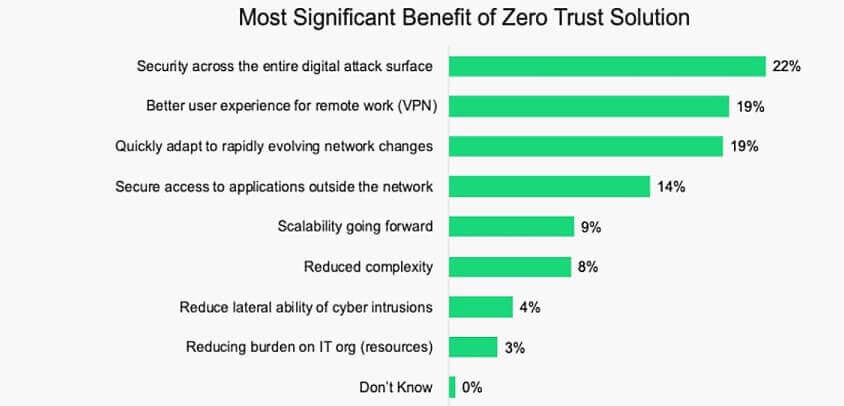Fortinet unveiled the Global State of Zero Trust Report. The survey reveals that while the majority of firms have a zero-trust vision or are in the process of adopting zero-trust efforts.
Over half of organizations are unable to translate this vision into the solutions they are deploying due to a lack of some basic zero trust fundamentals. The blog has a full summary of the findings and some key takeaways. The report's highlights include the following:
FortiGuard Labs Threat Landscape Report shows an upsurge in attacks on individuals, organizations, and increasingly essential infrastructure. Zero trust is front of mind for organizations searching for solutions to protect against changing threats. Organizations must safeguard vital assets from workers connecting from inadequately protected home networks due to the move to work-from-anywhere.
Confusion Over Defining Zero-Trust Strategies
The report shows some ambiguity concerning a complete zero-trust policy. Over 80% of respondents said they already have a zero-trust or ZTNA plan in place or developing. But over half said they couldn't build zero-trust capabilities. Nearly 60% said they can't continuously authenticate users and devices, and 54% say they can't monitor users after authentication.
This gap is concerning because these functions are critical tenets of zero-trust and it brings into question what the actual reality of these implementations is across organizations. Adding to the confusion are the terms “Zero Trust Access” and “Zero Trust Network Access,” which are used sometimes interchangeably.
Zero Trust Is Top of Mind and Priorities Are Varied
Priorities for zero trust are “minimizing the impact of breaches and intrusions" followed closely by "securing remote access" and "ensuring business or mission continuity." "Improving user experiences" and "gaining flexibility to provide security anywhere" were also top priorities.
“Security across the entire digital attack surface” was the single most important benefit cited by respondents, followed by a "better user experience for remote work (VPN)."
The majority of poll respondents say zero-trust security solutions must be integrated with current infrastructure, work in cloud and on-premise environments, and be secure at the application layer. But, according to over 80% of respondents, implementing a zero-trust strategy across a large network is difficult. Lack of competent resources was a challenge for firms without a strategy in place, with 35% employing other IT solutions to manage zero trust.
About the Zero-Trust Report:
The report is based on a global survey of IT decision-makers aimed at better understanding how far along organizations are in their zero-trust journey. The survey is intended to better understand the following:
• How well zero trust and ZTNA are understood
• The perceived benefits and challenges in implementing a zero-trust strategy
• Adoption of and the elements included in a zero-trust strategy
The survey was conducted in September 2021 with 472 IT and security leaders from 24 different countries, representing nearly all industries, including the public sector.

















No comments:
Post a Comment